The Re-Tern Project
Background
At one time, Long Island teemed with seabirds throughout the summer, as terns, gulls, skimmers and other species used the region’s beaches, bay islands and salt marshes as nesting grounds. Unfortunately, most of these species have suffered dramatic losses on the East Coast as human development has impacted the availability and quality of their nesting habitat. Even common terns, which were once very abundant (as their name implies), have declined by more than 75% since coast-wide surveys began in the late 1970s. On Long Island, nesting sites have been lost to the development of marshes, the heavy use of ocean beaches and high traffic of people, boats and personal water-crafts (e.g., jet skis) on and around bay islands
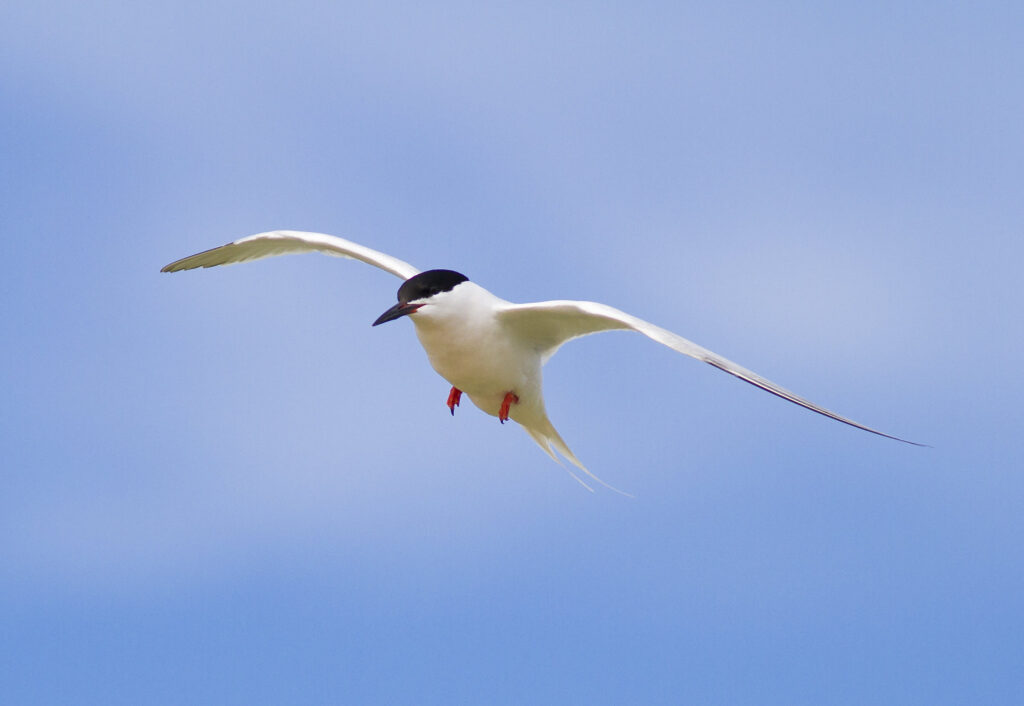
Nevertheless, there are enough of these species hanging on in our region that they still remain, for many, an integral part of life near the water. This is especially true about terns: with their sleek, effortless flight and dramatic dives into the water to catch fish, they are an iconic part of being along the Long Island’s coasts in the summer. However, the future of terns and other species that nest near the water is not bright. With sea levels rising, many of these species will be even more at risk on Long Island as high tides and storms increasingly put their nests and chicks at risk of being flooded.
The good news is that there are ways to help these birds. Over the past two decades, efforts up and down the coast (and across the globe) have helped terns and similar species by creating new habitats and restoring and recolonizing previously occupied sites. Studies have proven that small-scale breeding habitat creation or restoration projects can play a valuable role in contributing to a network of breeding sites.
Seatuck is undertaking a long-term effort to reestablish and safeguard nesting sites across Long Island. This project, titled the “Re-Tern Project,” focuses on terns and similar nesting species, such as Black Skimmers, American Oystercatchers, and more. The Re-Tern Project aims to re-establish and safeguard critical nesting sites for tern species. This work includes,
- Mapping historical, current, and potential nesting habitat for beach-nesting birds
- Implementing social attraction studies to entice birds to utilize “safer” locations versus less optimal, low-lying marsh islands
- Conducting habitat assessments and bird surveys for priority tern species at targeted sites
- Collaborating with experts to learn how we can protect and/or re-establish suitable nesting sites for seabird populations
South Shore
Since 2021, Seatuck has been monitoring one of the largest common tern colonies in the Great South Bay with trail cameras and boat-based surveys. This colony could support over 700 individual terns at a time, and has done so since 1995, until recently. In 2023, Seatuck recorded the abandonment of this historical nesting colony for the first time in almost 30 years.
We believe terns fled due to constant bombardment of flooding within their nesting grounds. Of thousands of images captured by trail cameras, 30% of the images recorded flooding of the island. On one night in early June, flooding was so intense that our cameras were completely underwater for a period of time, capturing images of crashing waves.
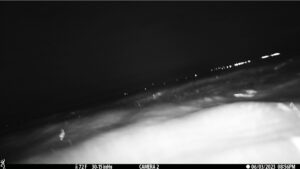
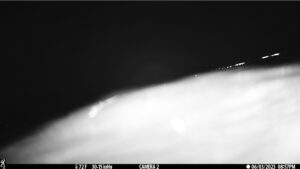
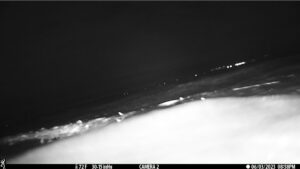
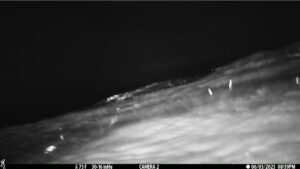
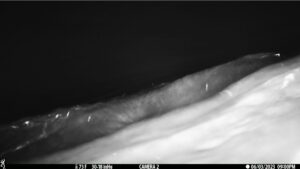
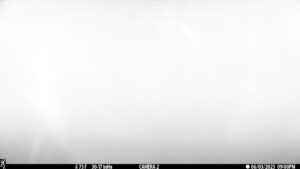
Unlike many other birds, terns don’t build nests high in trees or hidden deep in the understory; instead, they nest right on the ground on our sandy beaches or marsh islands. Terns create what’s called a “scrape”, using their belly and feet to scrape (as the name implies) a small, shallow bowl in the sand. This little inconspicuous groove on the beach is what will, hopefully, protect their future offspring.
Nests can be found above the high tide line; in theory, far enough up the beach so they won’t be washed away. The late spring and early summer months are the most crucial time for breeding success. This is when birds will pair up, mate, lay eggs, and sit on nests until they hatch. Unfortunately, this also happens to be some of the most popular times for beach recreation, so terns and other beach-nesting birds are forced to compete with humans for available nesting habitat each year. With coastal development and now sea-level rise shrinking the availability of suitable habitat, the situation has become dire for terns and other beach nesting species.
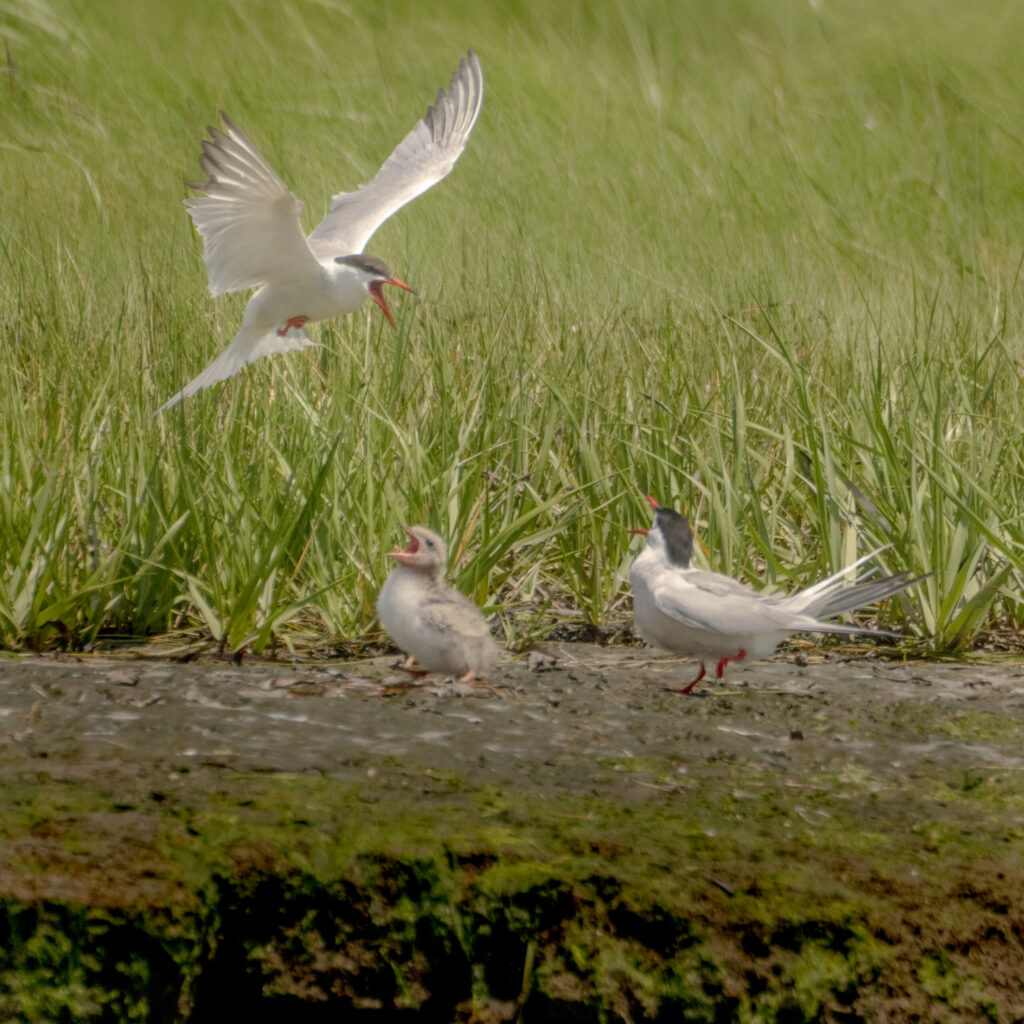
In order to safeguard future populations of seabirds, Seatuck piloted a “social attraction study” on a nearby dredge spoil island. The purpose of this study is to quite literally attract terns from low-level marsh islands to higher elevated sites safe from sea level rise and human disturbance. Though breeding was not documented in the first two years of the pilot study, terns were seen flying around and landing in the study plot.
North Fork
Not surprisingly, both least and common terns are listed as New York State threatened species, and roseate terns are federally, and state endangered. These species, as well as other seabirds and shorebirds, are being pushed out of their breeding grounds at an alarming rate with no sign of relief in sight. This is why it is crucial to conserve what suitable nesting habitat is left on Long Island, and where possible, create new habitat for future generations of beach-nesting birds.
The Re-Tern Project is a long-term effort to secure, monitor and create habitat for seabird nesting on Long Island. The first necessary step was to fully understand the situation on the ground by spending time on the North Fork collecting bird data, mapping nesting sites, conducting surveys to fill data gaps, and visiting past, existing, and potential nesting sites to assess conditions and threats. This, accompanied by extensive research on North Fork tern populations, would provide a better understanding of the status of tern and other seabird populations so they can be better protected. Thanks to the generous support from The Robin’s Island Foundation the first phase of this significant effort was completed in 2023.
Photos: KC Bailey
